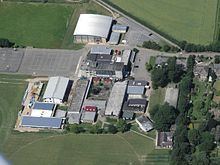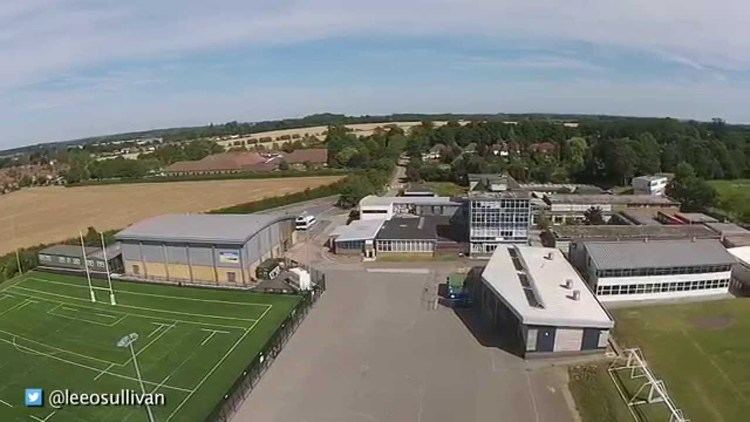Established 1881 Chair of Governors Jonathan Spencer Number of students 1,000 | DfE number 886/5412 Founded 1881 | |
Headteacher Dr Matthew N. F. Baxter Location Langton LaneNackington RoadCanterburyKentCT4 7AS England Motto Meliora Sequamur; May we follow better things | ||
Simon langton grammar school for boys year eleven leavers
Simon Langton Grammar School for Boys is a boys' school of over 1000 pupils and staff, located in the outskirts of Canterbury, Kent. It holds both Foundation and Grammar school status.
Contents
- Simon langton grammar school for boys year eleven leavers
- Foundation
- Uniform and Traditions
- Relation to the Church
- First and Second World Wars
- Headmasters
- Deputy Headmasters
- Academic performance
- The Langton Star Centre
- Writer in Residence
- The ASD Department
- Notable former pupils
- Musical alumni
- Other alumni
- Controversies
- Miscellanea
- References

Its sister school is Simon Langton Girls' Grammar School.
Students from all over East Kent typically join the school in Year 7 and can then stay on until GCSE examinations in Year 11. However, the majority of students decide to stay on into the sixth form, where a large number gain entry into universities, both in the UK and abroad. Notably, while the lower school (Years 7-11) is limited to boys, the sixth form is mixed.
It is situated on the B2068 towards the Canterbury bypass, south of the city.
Foundation
The school was founded along with its sister school in 1881, succeeding the Blue Coat Boys' School housed at the Poor Priest's Hospital in order to provide better education for the lower proportion of the Middle Class. The schools were originally called the Canterbury Middle Schools, but in order to dispel the impression that the schools were socially exclusive (the pair were often collectively known as the "middle class school"), they were renamed in 1887 after Simon Langton, Archdeacon of Canterbury (previously the Archbishop of York), who, after his death in 1248, had left behind endowments to the Poor Priest's Hospital (which were later bequeathed to the Simon Langton schools).

The school was initially built on the site of what is now the Whitefriar's Shopping Centre in central Canterbury. The buildings were built of red brick, dressed with Bath stone, the construction of which cost approximately £3000, and the design was simple with little decoration.
Uniform and Traditions
The first piece of uniform was introduced in 1887; a straw hat with a black and yellow band and a separate cap for the winter months. However, by 1927 the black and yellow design was fairly widely replicated by other schools and so was replaced by a red, blue and gold blazer and hat with a coloured button on the crown to signify the wearer's House.
By 1900, the school had a range of traditions. On 24 May, Queen Victoria's birthday, Empire Day was celebrated by a parade and the raising of the Union Flag in the playground, a speech by the headmaster, and a holiday. At the end of each Christmas term, boys would put on an "Entertainment", and over the Christmas holidays they would be expected to read a classic set by the headmaster.
The first Annual Commemoration Service was held in July 1911, and has continued since, being interrupted during wartime only.
Relation to the Church
It was established as early as 1876 by Dr. George Blore, Headmaster of The King's School, that the school could not be a denominational one, as it was not part of the foundation of the cathedral, and it had neither the original grant of Elizabeth I nor the Act of George II.
In a letter to The Guardian in 1906, the school was described by David Dorrity, who was the rector of St. Ann's Church, Manchester, as a secondary school that "is made use of by all who can afford to pay the fees to the denominational schools." He also appears to quote from the school's prospectus of the time:
"Religious instruction is given, but is restricted to lessons from the Bible, and exemption from this instruction or from attendance at prayers may be claimed on written notice being given to the head master."First and Second World Wars
During World War I, the Simon Langton schools were used by the military. The "New Wing" of Simon Langton Boys was adopted by the South East Mounted Rifles, who transformed the playground into a parade ground, and the playing fields were put to use by the army.
In the Second World War, the school was at first used as a reception centre for evacuees from London and the Medway towns; both staff and senior students helped to billet and feed the influx of children. The school was badly damaged in an air raid on the night of 1 June 1942 but continued on the Whitefriars site until it was relocated at its current site at Nackington in November 1959.
Headmasters
Deputy Headmasters
Academic performance
The school achieved dual specialisms in Science and Mathematics. The 2013 OFSTED report declared the school to be "Outstanding" in all areas.
The CERN Courier described the school as "one of the most active in implementing innovative ways of teaching science in the UK".
"The brilliance of Simon Langton School is to take a flavour of the excitement I experienced and continue to experience every day in university life – the excitement of knowing what nobody has ever known before – and bringing it into the classroom." Sir Leszek Borysiewicz, Vice Chancellor, Cambridge University at the opening of the Langton Star Centre 2011.
The Langton Star Centre
The Langton Star Centre is an organisation led by Dr Becky Parker MBE that supports research groups of students involved in cutting-edge scientific research, the principal aim of which is to "increase interest in science and engineering amongst post-16 school students such that they move on to study these subjects at university and take up careers in science and engineering." Projects run by the centre include the CERN@school project, the LUCID project (both in collaboration with CERN), the Imperial College plasma physics project, the Faulkes Telescope Project, and MBP2 (Myelin Basic Protein Project) with the help of the University of Kent in support of the Wellcome Trust.
Channel 4 news stated that "boys [at Simon Langton Grammar School for Boys] have gone well beyond the curriculum to take part in cutting-edge scientific experiments; plasma physics, space satellites and medical research", and even went as far to say that the school had "outwitted NASA" with the LUCID project.
Writer in Residence
In November 2006, the acclaimed author Simon Scarrow took up the newly formed position of Writer in Residence at SLBS, a position he said he is "honoured to accept". Simon will visit the school on a regular basis to hold creative writing sessions for students as well as judging the annual Scarrow Award for Fiction.
The ASD Department
This department is the first programme for pupils with autism spectrum disorder in a grammar school in England. This programme seeks to facilitate inclusion into mainstream education by encouraging positive policies to promote social integration. The department housed ten pupils. In 2011 the department widened to become the Faculty of Support and Guidance, responsible for all students with Special Needs, under the leadership of Mrs Grace Reed.
Notable former pupils
As of 2012, all former students of the School are given the opportunity to join the 1248 Society, which replaces the Old Langtonians Association as an alumni organisation which organises events and get-togethers for former members of the School.
Musical alumni
The school has been linked with the music of the Canterbury scene as founding members of the Wilde Flowers, Caravan and Soft Machine were alumni. Robert Wyatt is probably the most well known of the musicians that stemmed from Soft Machine. Ian MacDonald, then editor of NME, was quoted in 1975 to have described the school as "an exclusive, private establishment for the sons of local intellectuals and artists. Very free, emphatically geared to the uninhibited development of self-expression. A hot-bed to teenage avant-garderie."
Other musical Langtonians include the following:
Other alumni
Other notable alumni include the following (listed alphabetically):
Controversies
In November 2016, the school was at the centre of a controversy after the right-wing political activist, and former alumnus of the school, Milo Yiannopoulos, was invited to speak to the school's Langton Liberal Arts Society on the election of Donald Trump as President of the United States. On the advice of the Department for Education's Counter Extremism Unit, the school withdrew the invitation, resulting in Yiannopoulos claiming it had given in to bullying. Joanna Williams, mother of two Langton pupils, and education editor at right-wing online magazine Spiked, wrote on The Spectator magazine website that "banning him sends the message to six-formers the way to deal with ideas they find politically distasteful 'is to howl in protest and insist they go away'".
